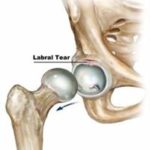Top 7 Expert-Backed Ways to Prevent Lower Back Pain at Work
Ever caught yourself hunched over your laptop like a pretzel at 3 PM? Yeah, we’ve all been there. Whether you’re grinding away at a desk, hustling on your feet, or constantly lifting and bending, back pain at work is one of those modern-day monsters that sneaks up when you least expect it. What’s worse? Ignoring it only gives it more room to growm and suddenly, that mild ache becomes a constant, nagging companion.
But hey, don’t throw in the towel just yet. With the right mix of awareness, movement, and a few expert hacks, you can nip that pesky pain in the bud. Ready to outsmart your spine strain? Let’s dive in.
Why You Might Be Hurting: A Quick Reality Check
1. The Real Culprits Behind Back Pain at Work
Before we jump into the fixes, it helps to understand the root of the problem. The biggest causes usually aren’t freak injuries they’re everyday habits that chip away at your posture and spinal health.
Here’s what might be to blame:
- Poor posture (hello, slouched shoulders!)
- Sitting too long without breaks
- Repetitive lifting or twisting
- Unsupported chairs or desks
- Stress and tension buildup
Interestingly, research shows that what causes back pain in females often includes hormonal shifts and weaker core muscles, making it even more important to stay mindful at work.
2. Sitting Isn’t the New Smoking It’s Worse
Let’s not beat around the bush: the average office chair is a back’s worst nightmare. Combine that with 8+ hours of screen-staring and zero movement, and you’ve got a recipe for disaster.
If you want to reduce back pain at work, you’ll need to rethink how you move, sit, and even breathe during your 9-to-5 hustle.
Top 7 Expert-Backed Ways to Prevent Lower Back Pain at Work
Alright, time to roll up your sleeves and take back control. These tried-and-tested methods are backed by physiotherapists, ergonomics experts, chiropractors, and support physiotherapy at home.
1. Upgrade Your Workspace Setup
Start by showing your desk who’s boss. A proper ergonomic setup can work wonders for your spine.
What to fix:
- Monitor at eye level (no more chin-to-chest scrolling)
- Feet flat on the ground or footrest
- Lower back supported by a cushion or lumbar pillow
- Elbows bent at 90 degrees, wrists relaxed
2. Stand, Stretch, Stroll
You’ve got legs use them! Sitting nonstop compresses spinal discs and weakens core muscles.
Try this:
- Set a reminder to stand every 30–45 minutes
- Do 1–2 minutes of light stretches or a quick hallway walk
- Try desk yoga (yes, it’s a thing!)
3. Strengthen That Core (It’s Not Just About Abs)
A strong core equals a strong back. It’s not about crunches it’s about stability.
Daily moves to try:
- Pelvic tilts
- Bird-dogs
- Bridges
- Wall sits
Bonus: These are simple enough to sneak into your morning routine or lunch break.
4. Mind Your Movements
Whether you’re lifting boxes or picking up a pen technique matters.
Golden rules:
- Bend your knees, not your waist
- Keep the object close to your body
- Avoid twisting pivot your feet instead
5. Manage Your Stress
Believe it or not, stress can tighten muscles like a vice. Your back ends up bearing the brunt.
Beat the tension:
- Practice deep breathing
- Add 5 minutes of mindfulness to your day
- Talk it out, walk it out don’t bottle it up
6. Invest in the Right Chair (Your Spine Will Thank You)
If you’re working from home or have flexibility at the office, splurging on a supportive ergonomic chair can change your life.
Look for:
- Adjustable lumbar support
- Seat height adjustment
- Armrests that align with desk height
- Breathable cushion
7. Don’t Ignore the Early Signs
Let’s face it most people wait until their back is screaming before they act. That’s a no-go.
Watch for:
- Persistent stiffness or tightness
- Sudden sharp pains when standing or bending
- Tingling or numbness in legs or feet
Early attention means faster recovery and fewer long-term issues.
The 4 Types of Back Pain You Should Know
Not all back pain is created equal. Understanding the 4 types of back pain can help you better communicate with your doctor or therapist.
- Acute Pain – Sudden and sharp, usually from an injury
- Chronic Pain – Lasts 3+ months, often with no clear cause
- Neuropathic Pain – Tingling, numbness, caused by nerve damage
- Mechanical Pain – Comes from spine, joints, or muscles
Knowing what you’re dealing with makes finding relief a whole lot easier.
FAQs
Q: How long should I sit before taking a break?
A: Ideally, take a short break every 30–45 minutes. Even a 2-minute stretch or walk can help.
Q: Can women experience different symptoms of back pain?
A: Yes! Hormonal changes, pregnancy, and weaker core muscles can all affect how back pain in females shows up.
Q: Is it okay to use a heating pad during work hours?
A: Absolutely, as long as it’s safe and doesn’t interfere with your tasks. Heat can ease stiffness and improve blood flow.
Q: Will standing desks solve the problem?
A: Not entirely, but alternating between sitting and standing can reduce pressure on your lower back.
Conclusion
Let’s be real, back pain at work doesn’t just affect your body, it zaps your energy, mood, and productivity. But you don’t have to accept it as the price of making a living. With a few small tweaks and a dash of consistency, you can kick that pain to the curb and start feeling like your best self again.
So go ahead tweak your setup, stretch it out, and give your spine the love it deserves. Your future self will thank you (trust me).











